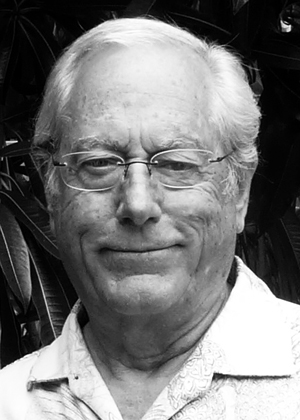Citation
Davis’s contributions to oceanography are distinguished by unique breadth and a profound impact. Davis began his career by elucidating the role of nonlinearity and dispersion in forming solitary internal waves and by explaining how surf on a beach excites edge waves. He has made fundamental contributions to understanding Lagrangian velocity statistics and ocean property transport. He has focused the most critical of intellects on understanding the limits of ocean observations and climate predictability. Davis introduced objective mapping to the oceanographic community, and now oceanographers cannot analyze data without heavy reliance on this technique.
Davis has been unwilling to be confined by existing instrumentation and has made transformative contributions to ocean-observing technology. He led development of the first acoustic Doppler current profilers for ships and self-contained units for moorings. With Bob Weller, Davis designed the vector measuring current meter. But Davis’s greatest single contribution to ocean technology is the development, with Doug Webb, of the autonomous Lagrangian circulation explorer (ALACE). These ALACE floats evolved to become the basic platform of the Argo ocean-observing system. Argo routinely reports currents and makes high-quality temperature and salinity measurements to 2000-m depth across the ice-free ocean. Many oceanographers contributed to the success of Argo. But Davis designed a key component, and his leadership was crucial at the creation.
Comparing Russ Davis with Maurice Ewing is irresistible. First and foremost, both combine a rigorous theoretical intellect with a determination to make observations of the ocean. Argo is Russ’s answer to Ewing’s imperative to collect as much ocean data as possible, everywhere and all the time. Ewing was a forceful and outspoken personality. Bullard in his biography of Ewing says, “He never asked anyone to do what he would not have done himself, and in fact he could and would do almost anything.” Those of you who know Russ personally will see the similarities. But doing almost anything is not wise: Ewing was swept overboard and almost lost his life at sea. Russ has developed robotic observers that relieve oceanographers from the dangers and discomfort of seagoing work. Finally, what might have happened if Russ Davis had followed Maurice Ewing and become the director of his home institution? It would have been amusing to observe events in La Jolla from the distant safety of Woods Hole or Hawaii.
The 2015 Ewing Medal recognizes Davis’s pioneering contributions to the solution of many important problems in oceanography and his monumental work in the design of ocean observing technology.
—William Young, University of California, San Diego, La Jolla
Response
I thank Bill Young for his citation putting a splendid spin on my career—beware Australians telling tales. Thanks also to the people who make awards possible by nominating colleagues or donating time on awards committees making Solomon’s choices.
The American Geophysical Union’s awards recognize the accomplishments of individuals. It is fitting to do this and delightful to be recognized. But, I believe, most accomplishments are the product of a community generously helping the young and freely sharing ideas. This is not a new perspective, but let me tell why it is mine.
I inherited my father’s joy in model airplanes, amateur radio, and such, which led me toward engineering. In engineering graduate school, a bulletin board flyer sent me to the Woods Hole Oceanographic Institution summer program, where Stewart Turner offered to mentor me when my intended adviser disappeared. After a couple months seeing how Turner used laboratory observations and simple models to learn fascinating things, I had unbounded enthusiasm and a thesis topic. Imagine the magnanimity of my chemical engineering adviser, Andreas Acrivos, giving his time and funds to help me study internal waves in his lab! With characteristic grace and generosity, this highly recognized engineer opened the door to oceanography.
Scripps was dominated by giants. Walter Munk and John Miles at the Institute of Geophysics and Planetary Physics invited me into a world looked at through mathematical glasses; “down the hill,” Chip Cox and Fred Spiess had amazing ways to observe and discover things in the ocean. All helped repair my educational holes and made oceanography awfully fun. It was Chip who suggested that the then new acoustic ship’s log might become an affordable miniaturization of the giant acoustic Doppler current profiler that Fred Spiess and Rob Pinkel had built on the floating instrument platform (FLIP)—shipboard and self-contained Dopplers followed. Chip’s lab was a hotbed of technology, including a vertically cycling probe that freed microstructure measurements from ship motion. When Joe Reid showed me fascinating tracks from John Swallow’s floats, the World Ocean Circulation Experiment (WOCE) float was borne; Terry Joyce suggested adding a conductivity-temperature-depth profiler. Had it not been for Dean Roemmich, that float would have been just another observing specialty. But Dean had the revolutionary vision to turn it into a global observing system, Argo. While he was doing that, I helped Jeff Sherman design the Spray glider; we have been using it ever since.
So I gratefully accept the Ewing Medal with deep gratitude to all those who helped me do useful things and have tremendous fun.
—Russ E. Davis, Scripps Institution of Oceanography, La Jolla, Calif.
Citation: AGU (2015), Russ E. Davis receives 2015 Maurice Ewing Medal, Eos, 96, doi:10.1029/2015EO041269. Published on 22 December 2015.
Text © 2015. The authors. CC BY-NC 3.0
Except where otherwise noted, images are subject to copyright. Any reuse without express permission from the copyright owner is prohibited.

